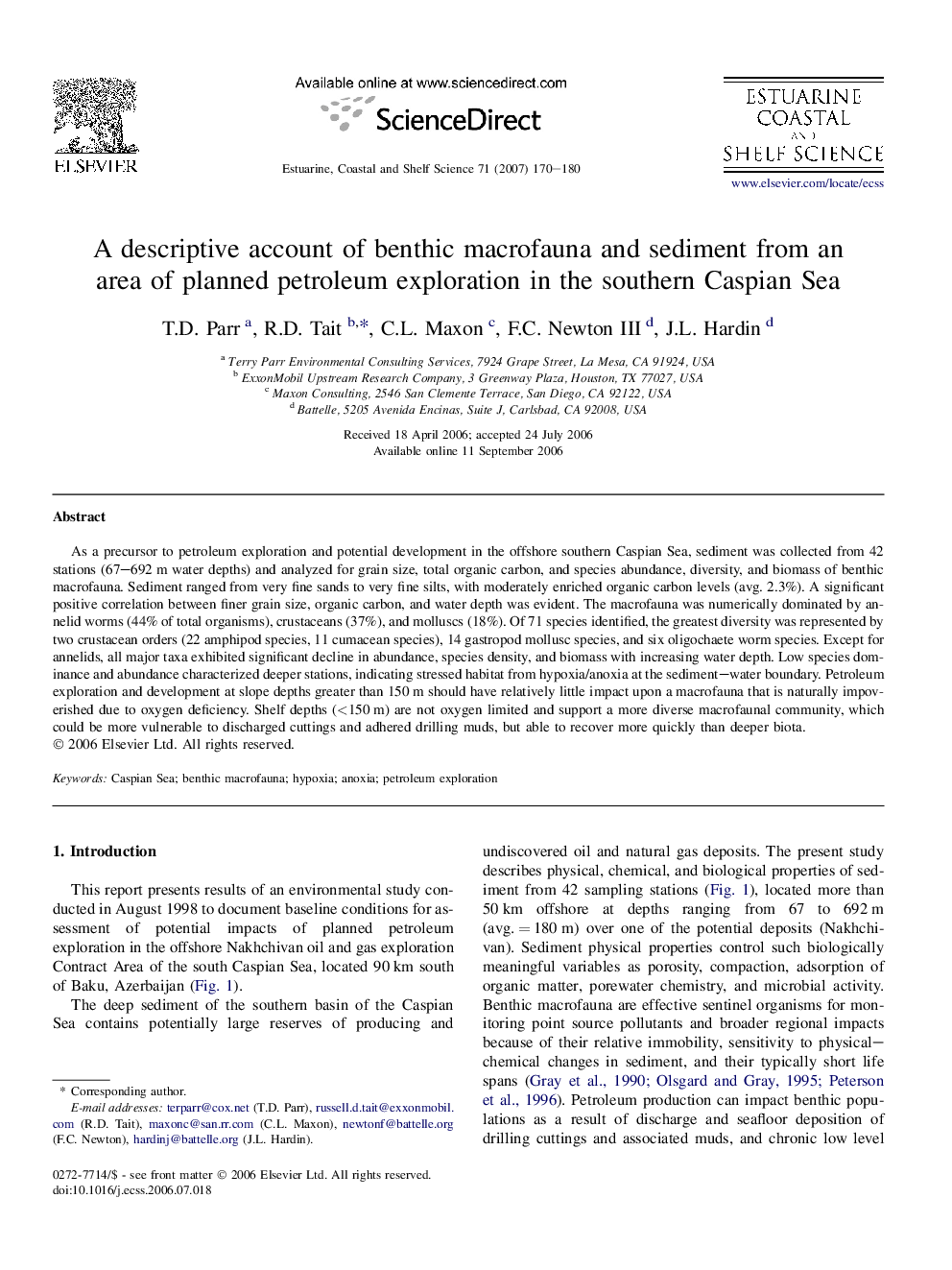| Article ID | Journal | Published Year | Pages | File Type |
|---|---|---|---|---|
| 4542058 | Estuarine, Coastal and Shelf Science | 2007 | 11 Pages |
As a precursor to petroleum exploration and potential development in the offshore southern Caspian Sea, sediment was collected from 42 stations (67–692 m water depths) and analyzed for grain size, total organic carbon, and species abundance, diversity, and biomass of benthic macrofauna. Sediment ranged from very fine sands to very fine silts, with moderately enriched organic carbon levels (avg. 2.3%). A significant positive correlation between finer grain size, organic carbon, and water depth was evident. The macrofauna was numerically dominated by annelid worms (44% of total organisms), crustaceans (37%), and molluscs (18%). Of 71 species identified, the greatest diversity was represented by two crustacean orders (22 amphipod species, 11 cumacean species), 14 gastropod mollusc species, and six oligochaete worm species. Except for annelids, all major taxa exhibited significant decline in abundance, species density, and biomass with increasing water depth. Low species dominance and abundance characterized deeper stations, indicating stressed habitat from hypoxia/anoxia at the sediment–water boundary. Petroleum exploration and development at slope depths greater than 150 m should have relatively little impact upon a macrofauna that is naturally impoverished due to oxygen deficiency. Shelf depths (<150 m) are not oxygen limited and support a more diverse macrofaunal community, which could be more vulnerable to discharged cuttings and adhered drilling muds, but able to recover more quickly than deeper biota.
